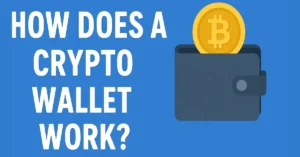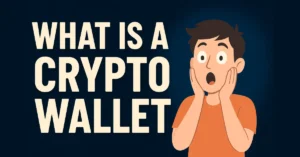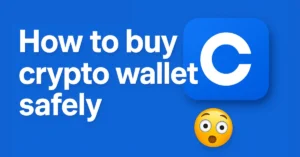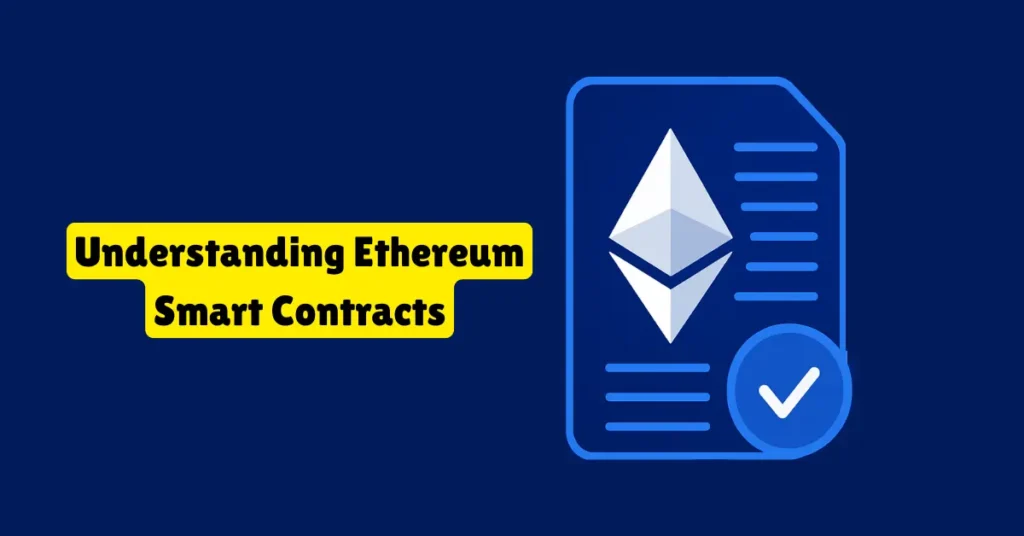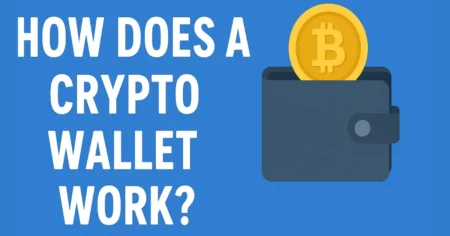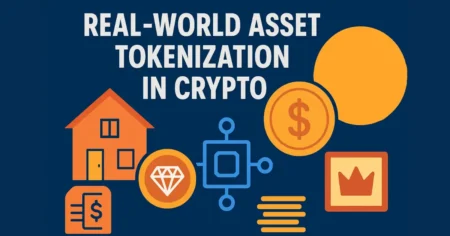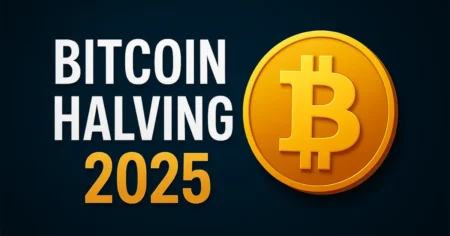Introduction to Ethereum Smart Contracts
Ethereum smart contracts are one of the most revolutionary developments in the blockchain space. If you’ve ever wondered how people can exchange assets, manage agreements, or even run entire businesses online without a middleman, smart contracts are the magic behind it. In simple terms, a smart contract is a self-executing piece of code stored on a blockchain. It runs exactly as programmed and doesn’t require human intervention once deployed.
Ethereum, launched in 2015, is the most widely used platform for smart contracts. Its key innovation was introducing a programmable blockchain that could handle much more than simple cryptocurrency transactions. With Ethereum, developers can build decentralized applications (dApps) powered by smart contracts to automate processes like lending, voting, or selling NFTs.
Unlike traditional contracts, which depend on lawyers, courts, and intermediaries to enforce, smart contracts rely on blockchain consensus. This makes them faster, more secure, and in many cases, cheaper. The best part? They’re trustless—meaning you don’t have to trust the other party; you just trust the code.
The Evolution of Smart Contracts
The concept of smart contracts wasn’t born with Ethereum—it dates back to 1994 when cryptographer Nick Szabo introduced the idea. Szabo envisioned contracts that could execute themselves without relying on third parties, using computer code as the agreement’s foundation. However, in the 1990s, blockchain technology didn’t exist, so the concept remained theoretical.
When Bitcoin launched in 2009, it proved that decentralized, trustless transactions were possible. But Bitcoin’s scripting language was limited and couldn’t easily handle complex conditions. That’s where Ethereum came in. In 2015, Vitalik Buterin and his team launched a blockchain designed specifically for programmable contracts, giving developers an open playground for innovation.
Ethereum’s flexibility allowed industries like finance, gaming, and supply chain to experiment with decentralized models. This evolution took smart contracts from a niche concept to a multi-billion-dollar ecosystem. Today, Ethereum smart contracts handle everything from lending billions in DeFi protocols to securing NFT ownership records.
How Ethereum Smart Contracts Work
At their core, Ethereum smart contracts are just code stored on the Ethereum blockchain. They’re written in Solidity, Ethereum’s most popular programming language. Once written, the code is compiled and deployed to the Ethereum network, where it receives a unique address.
When a smart contract is triggered (usually by a transaction), every Ethereum node executes the contract code to ensure consensus on the outcome. This ensures that the contract can’t be tampered with—everyone sees and agrees on the same result.
Gas fees play a big role in how smart contracts work. Every operation on Ethereum costs “gas,” which is paid in ETH. Complex contracts cost more gas because they require more computation. This mechanism prevents spam and incentivizes efficient code.
One important point to remember: once deployed, a smart contract is immutable. That means if there’s a bug, it can’t simply be “patched” like regular software—you’d have to deploy a new contract entirely. This is why security audits are so critical.
Benefits of Ethereum Smart Contracts
Ethereum smart contracts have several advantages over traditional agreements:
- Trustless Transactions – You don’t need to rely on the other party or a third party. The code enforces the terms automatically.
- Transparency – The contract’s code and transaction history are visible on the blockchain for anyone to verify.
- Security – Since the blockchain is decentralized and tamper-resistant, it’s nearly impossible to alter an executed contract.
- Automation – Smart contracts can execute actions instantly when conditions are met, eliminating delays.
- Cost Efficiency – By cutting out intermediaries like lawyers or banks, transaction costs can drop significantly.
For example, in DeFi lending platforms like Aave or Compound, smart contracts automatically manage loans, interest rates, and collateral without a bank. In supply chains, they can automatically release payments when goods arrive at a port, reducing disputes.
The bottom line: Ethereum smart contracts give us a faster, safer, and cheaper way to handle agreements in the digital age.
Real-World Use Cases of Ethereum Smart Contracts
Ethereum smart contracts are not just theoretical—they’re already powering real-world systems:
- Decentralized Finance (DeFi) – Platforms like Uniswap and MakerDAO use smart contracts to handle trades, loans, and stablecoins without a central authority.
- NFTs & Digital Art – Smart contracts ensure that when you buy an NFT, you’re recorded as the official owner, and creators can receive royalties automatically.
- Supply Chain Management – Businesses use contracts to track goods from origin to delivery, releasing payments only when items meet predefined conditions.
- Voting Systems – Blockchain-based voting can increase transparency, prevent fraud, and allow secure remote participation.
In the USA, companies like IBM and Walmart are already using blockchain-based contracts for supply chain verification. Artists on platforms like OpenSea rely on Ethereum contracts to ensure secure NFT sales. The potential applications are vast—and we’re only scratching the surface.
Limitations and Risks of Ethereum Smart Contracts
While Ethereum smart contracts offer powerful advantages, they are not without their downsides. One of the most significant risks is coding vulnerabilities. Because contracts are immutable once deployed, any error or exploit in the code can be costly. We’ve seen real-world examples, such as the 2016 DAO hack, where a coding flaw allowed attackers to steal millions of dollars in ETH. That incident highlighted the need for rigorous testing and auditing before launch.
Another challenge is scalability. Ethereum can currently process only a limited number of transactions per second. When the network is congested—such as during NFT booms or major DeFi launches—gas fees can spike dramatically, making smart contracts expensive to use. This is especially problematic for small-scale applications or users with limited budgets.
Gas fee volatility is another major pain point. Because gas prices are determined by supply and demand on the network, executing a contract can cost anywhere from a few cents to hundreds of dollars, depending on network activity. This unpredictability can be frustrating for developers and users alike.
In addition, regulatory uncertainty still exists in many jurisdictions, including the USA. While blockchain technology itself is generally legal, certain uses of smart contracts—like token sales—may fall under securities or financial regulations. Developers need to be aware of compliance issues to avoid legal trouble.
Finally, there’s the human factor: even if the code is perfect, smart contracts can still be misused or misunderstood. A contract can only enforce the rules it was programmed with; it cannot interpret intent beyond its code. This is both a strength and a limitation.
Ethereum vs. Other Smart Contract Platforms
Ethereum may be the most popular smart contract platform, but it’s far from the only one. Competing blockchains like Binance Smart Chain (BSC), Cardano, and Solana are gaining traction by offering lower fees, faster transactions, or unique features.
Ethereum vs. Binance Smart Chain (BSC):
BSC is known for its low transaction costs and speed. It’s EVM-compatible, meaning Ethereum developers can easily port their contracts over. However, BSC is more centralized than Ethereum, with fewer validators, which some argue reduces security and decentralization.
Ethereum vs. Cardano:
Cardano focuses heavily on academic research and peer-reviewed development. It uses a proof-of-stake consensus mechanism that’s more energy-efficient than Ethereum’s original proof-of-work model. However, Cardano’s smart contract ecosystem is newer and less mature, meaning fewer dApps and tools are available.
Ethereum vs. Solana:
Solana boasts high-speed transactions and low fees, making it attractive for gaming and DeFi applications. However, it has experienced network outages, raising questions about long-term stability.
While these platforms offer competitive advantages, Ethereum’s first-mover position, vast developer community, and established ecosystem still make it the dominant player in the smart contract space. Many believe Ethereum 2.0 and scaling solutions will help it maintain that lead.
How to Create an Ethereum Smart Contract
Building your own Ethereum smart contract may sound intimidating, but it’s more approachable than you might think—especially with the right tools and resources. Here’s a simplified roadmap:
Set Up Development Tools
You’ll need tools like Remix IDE (a web-based Solidity editor), MetaMask (a crypto wallet and Ethereum gateway), and Node.js for more advanced development setups. These tools allow you to write, test, and deploy contracts directly from your computer.
Write Your First Contract
Start with a basic Solidity program. For example, a simple “Hello World” contract might store and display a message. As you gain confidence, you can create contracts that handle payments, manage tokens, or automate tasks.
Test on a Testnet
Never deploy directly to the main Ethereum network without testing. Use networks like Ropsten, Goerli, or Sepolia to simulate real-world behavior without risking real ETH.
Deploy to Ethereum
When you’re ready, deploy your contract to the mainnet. You’ll need ETH to pay for gas fees. Once deployed, your contract will be live for anyone to interact with—forever.
Verify and Share
After deployment, verify your contract on Etherscan so others can read and trust the code.
The most important advice? Keep it simple at first. Overly complex contracts are harder to secure and more expensive to execute.
Security Best Practices for Smart Contracts
Given the risks of coding errors and attacks, security should be a top priority for anyone working with smart contracts. Here are some key best practices:
- Code Audits – Have your contract reviewed by professional security auditors. They can identify vulnerabilities you might have missed.
- Use Established Libraries – Instead of writing everything from scratch, use trusted libraries like OpenZeppelin, which provide secure, community-tested code for common tasks such as token creation.
- Test Thoroughly – Test your contract extensively on testnets and with different scenarios. Consider using automated testing frameworks to simulate edge cases.
- Limit Complexity – The simpler your code, the fewer potential vulnerabilities. Avoid unnecessary logic or features unless needed.
- Add Failsafes – Include mechanisms like “pausable” contracts or “emergency stop” functions to halt execution if something goes wrong.
- Stay Updated – The blockchain security landscape evolves quickly. Keep learning about new threats and updating your coding practices accordingly.
A well-secured smart contract can operate flawlessly for years. A poorly secured one can be exploited within minutes of going live.
The Future of Ethereum Smart Contracts
The future looks bright for Ethereum smart contracts, especially with the ongoing Ethereum 2.0 upgrades. These upgrades aim to improve scalability, reduce fees, and increase energy efficiency by transitioning fully to a proof-of-stake model.
Layer 2 scaling solutions, such as Optimistic Rollups and zk-Rollups, are already helping to reduce gas costs and speed up transactions. This could open the door for mass adoption of smart contracts in everyday applications—from microtransactions to global supply chain management.
We’re also seeing growing interest from governments and large corporations. Some cities in the USA are exploring blockchain-based voting systems, while major financial institutions are experimenting with tokenized assets and blockchain settlements.
In the long term, Ethereum smart contracts could power a truly decentralized internet, where apps and services are run by code instead of corporations. The possibilities are as vast as the creativity of the developers building on it.
Conclusion – Why Ethereum Smart Contracts Matter
Ethereum smart contracts represent a fundamental shift in how agreements, transactions, and even governance can work in the digital world. They remove the need for trust between parties, reduce costs, and open the door to innovations that would have been impossible with traditional systems.
Whether it’s managing billions in decentralized finance, creating digital art marketplaces, or securing supply chains, Ethereum smart contracts are already proving their value. And as the technology evolves, they’re likely to become even more integral to our daily lives.
For developers, entrepreneurs, and everyday users in the USA, this is not just a passing trend—it’s the foundation of a new digital economy.
FAQs
Q1: Can anyone create an Ethereum smart contract?
Yes, as long as you have some basic programming knowledge and ETH for gas fees, you can create and deploy a contract.
Q2: How much does it cost to deploy one?
Costs vary depending on complexity and network congestion, but simple contracts may cost a few dollars, while complex ones can be hundreds.
Q3: Are Ethereum smart contracts legal in the USA?
Yes, but their use must comply with existing laws. Certain applications may fall under securities or financial regulations.
Q4: Can they be changed after deployment?
Generally, no. Once deployed, contracts are immutable. You’d need to deploy a new one to make changes.
Q5: How do they differ from traditional contracts?
Traditional contracts rely on legal enforcement, while smart contracts rely on code execution and blockchain consensus.
Also, read
- What is a crypto wallet, and how does it work? – Coinsify
- 10 Crypto Terms Every Beginner Must Know: Coinsify
- What is blockchain technology? Complete Guide – Coinsify
- How to Buy Crypto Safely in 2025: Complete Guide – Coinsify
- Bitcoin vs Ethereum: Key Differences Explained: Complete Guide
- Ultimate Blockchain Glossary: Learn Blockchain Terms Easily
- How to Buy Bitcoin Safely (Complete Beginner’s Guide)
- Top 10 Crypto Wallets for Beginners (2025 Edition)
- What is cryptocurrency? A Beginner-Friendly Guide (2025)
